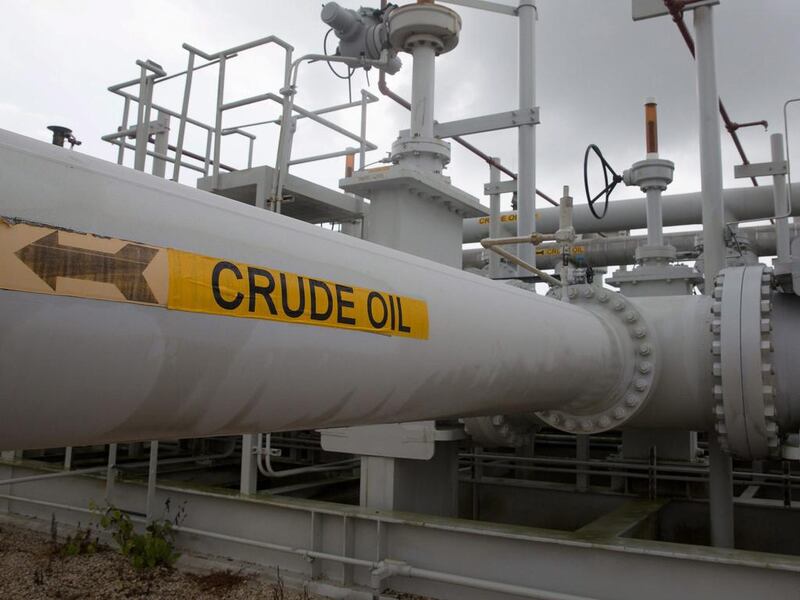Oil prices could surge towards the high $60 per barrel range, with refineries expected to come back onstream following scheduled shutdowns as well as the possible slowdown of US shale growth, according to the head of analytics at S&P Global Platts.
"We see [oil prices] testing the high $60s at the end of the year, because of the refineries coming back in November but there is a lot of resistance in the options market to get above $65," Chris Midgley, the global director of analytics at the energy intelligence firm, told The National in an interview in Abu Dhabi.
"We really feel it [the price] should be higher, but we feel the sentiment in the market will struggle, the funds really don't want to get long, because there is not a lot of upside in the back-end of the market."
Oil prices have languished in the $50-$60 range since May, as trade concerns and a gloomy economic environment has kept prices low. Brent jumped as high as $71 per barrel in intraday trading following the attacks against Saudi oil facilities on September 14, which knocked out 5 per cent of global supply. However Saudi efforts to quickly recover production and capacity, reversed the gains, dragging Brent back to levels lower than seen before the attacks.
The benchmark, against which more than half of the world's crude is priced, lost over 14 per cent of its value following the attacks and was trading at $58.68 per barrel at 5.15pm UAE time. West Texas Intermediate, which largely tracks North American crude grades, held steady for the second consecutive day at $52.81 per barrel.
Platts expects prices to hold in the range of $55 to $65 per barrel next year, with fundamentals likely to support a band of $60-$65 per barrel, said Mr Midgley. Long-term, he expected prices to remain below $60 per barrel.
Demand growth for crude could be slashed to 600,000 barrels per day from Platts' current assumption of 1.2 million bpd if the global economy enters a recessionary phase, for which the intelligence provider maintains a 35 per cent probability.
"Equally if we were to move to higher oil prices, either driven by geopolitics or due to the fact that close to the end of the year IMO [the International Maritime Organisation] would lead to higher refinery runs, and let’s say hypothetically oil prices were to move from $60 to $80 per barrel, that also would cut demand by 50 per cent," said Mr Midgley. The IMO will enforce regulations to cap sulphur content in bunker fuel from 2020 onwards.
The International Energy Agency last week revised down its forecast for oil demand growth by 100,000 bpd and observed that markets had priced in little geopolitical risk premium after the attacks on Saudi oil facilities.
Geopolitical risk premium was priced out of the market after funds were "burnt" last year by prices of $86 per barrel following the imposition of sanctions on Iran, noted Mr Midgley, only to decline by 37 per cent by year-end.
"Funds went long, people thought oil would go up to $100 and it went to $56 and they lost a lot of money. I think from that perspective is it more sanguine or more cautious about piling into the market assuming there’s an upside," he added.








